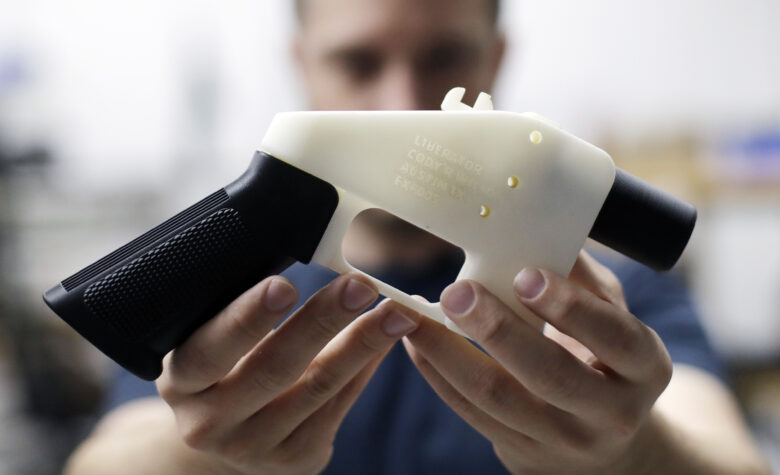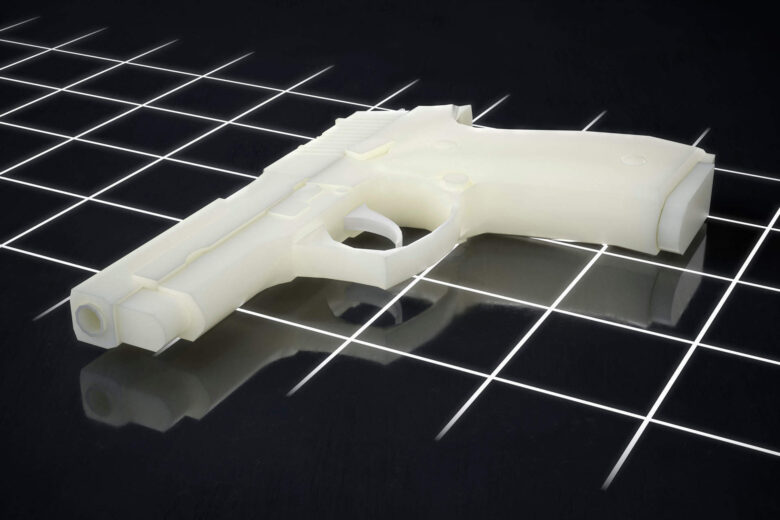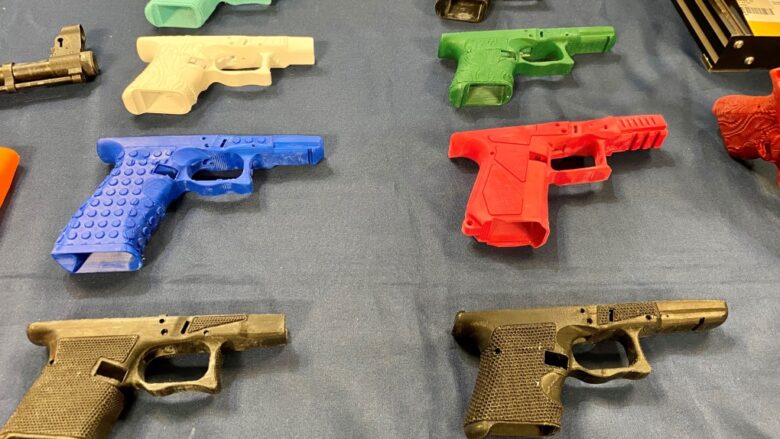The firearms industry has always been at the forefront of technological advancements, and today, we are witnessing an era of unprecedented innovation. Emerging technologies are revolutionizing the design, production, and functionality of firearms, paving the way for safer, more efficient, and customizable weapons. In this blog post, we will explore some of the most exciting developments in the field, ranging from smart firearms and 3D-printed guns to artificial intelligence and non-lethal options. Join us on this journey as we delve into the world of emerging technologies that are shaping the future of firearms.
Contents
- Smart firearms: Integration of advanced sensors and biometrics for enhanced safety
- 3D-printed guns: Impact and challenges of additive manufacturing in firearm production
- Miniaturized ammunition: Compact and high-powered rounds for increased efficiency
- Smart optics: Integration of augmented reality and targeting systems for improved accuracy
- Caseless ammunition: Advancements in propellant technology for lighter and more efficient rounds
- Electronic firing systems: Wireless communication and remote control capabilities for firearms
- Modular platforms: Customizable firearm designs for adaptability and personalization
- Artificial intelligence in firearms: Role of AI in target identification and autonomous shooting
- Non-lethal options: Development of less-lethal firearms for law enforcement and self-defense
- Legal and ethical considerations: Addressing challenges and implications of emerging firearm technologies
- Conclusion
Smart firearms: Integration of advanced sensors and biometrics for enhanced safety
Smart firearms, with their integration of advanced sensors and biometrics, are ushering in a new era of gun safety. These cutting-edge weapons utilize technologies like fingerprint recognition and grip sensors, ensuring that only authorized users can fire them. By incorporating biometric authentication, smart pistols significantly reduce the risk of accidental discharge or unauthorized access. Moreover, the integration of advanced sensors enables real-time feedback on crucial factors such as temperature, humidity, and ammunition levels. This enhancement in reliability and performance marks a significant milestone in the quest for safer and more responsible gun ownership. With the increasing availability of smart pistols, individuals can now explore a wide range of options in the market, including a variety of guns for sale that prioritize user safety and technological advancements.

Source: 9news.com.au
3D-printed guns: Impact and challenges of additive manufacturing in firearm production
The advent of 3D printing has had a profound impact on various industries, and the gun sector is no exception. 3D-printed guns, also known as “downloadable firearms,” have gained attention due to their accessibility and controversial nature. Additive manufacturing allows individuals to create pistols using 3D printers, making it harder to regulate their distribution and control. While this technology presents challenges in terms of law enforcement and public safety, it also offers potential benefits, such as easier access to replacement parts for gun owners and reduced costs in the production process. Striking a balance between innovation and regulation remains a key challenge in the era of 3D-printed guns.
Miniaturized ammunition: Compact and high-powered rounds for increased efficiency
Advancements in ammunition technology have resulted in the development of miniaturized rounds that offer improved efficiency and performance. These compact yet powerful ammunition options allow guns to carry more rounds without compromising on firepower. By utilizing innovative designs and materials, manufacturers have achieved remarkable results, increasing the terminal ballistics while reducing the weight and size of the ammunition. This development is particularly significant for military and law enforcement applications where increased capacity and maneuverability are crucial.
Smart optics: Integration of augmented reality and targeting systems for improved accuracy
Smart optics are transforming the way we aim and shoot. By integrating augmented reality and targeting systems, these advanced optics enhance accuracy, situational awareness, and overall shooting experience. Heads-up displays projected onto the user’s field of view provide real-time information, such as distance to the target, environmental conditions, and even shot trajectory. This technology enables shooters to make precise adjustments and anticipate the impact of external factors on their shots. Smart optics not only benefit professional marksmen but also enhance recreational shooting, allowing enthusiasts to experience the thrill of precision shooting with an added layer of technological sophistication.

Source: verdict.co.uk
Caseless ammunition: Advancements in propellant technology for lighter and more efficient rounds
Traditionally, firearms have used ammunition consisting of a cartridge with a casing enclosing the propellant and projectile. However, emerging technologies have given rise to caseless ammunition, which eliminates the need for a separate casing. This innovation brings several advantages, including reduced weight, increased ammunition capacity, and improved efficiency.
Electronic firing systems: Wireless communication and remote control capabilities for firearms
Electronic firing systems are revolutionizing the way firearms are operated and controlled. By incorporating wireless communication and remote control capabilities, these systems offer enhanced functionality and user convenience. Remote control features enable shooters to adjust settings, such as trigger pull weight or firing mode, without physically manipulating the pistol. This technology also enables guns to communicate with external devices, such as scopes or wearable devices, providing real-time information and enhancing the overall shooting experience. Electronic firing systems not only offer convenience but also have potential applications in law enforcement and military operations, where remote control capabilities can improve safety and tactical effectiveness.
Modular platforms: Customizable firearm designs for adaptability and personalization
Modularity is a key trend in emerging firearm technologies, allowing users to customize their weapons according to their specific needs and preferences. Modular platforms enable the interchangeability of various components, such as barrels, grips, and stocks, providing adaptability for different shooting scenarios. Shooters can easily modify their firearms to suit specific purposes, whether it’s long-range precision shooting, close-quarter engagements, or personal defense. This flexibility not only enhances the user experience but also extends the lifespan of guns by allowing them to evolve alongside technological advancements.

Source: winnipeg.ctvnews.ca
Artificial intelligence in firearms: Role of AI in target identification and autonomous shooting
Artificial intelligence (AI) is making its mark in the firearms industry, particularly in the realm of target identification and autonomous shooting. AI algorithms can analyze vast amounts of data, including images and video feeds, to identify and track targets with unprecedented speed and accuracy. This technology has the potential to enhance the capabilities of both military and law enforcement personnel, enabling faster target acquisition and engagement. However, ethical considerations and concerns regarding the potential for autonomous weapons require careful scrutiny and regulation. Striking a balance between utilizing AI for improved performance and addressing ethical implications is crucial in harnessing the full potential of this technology.
Non-lethal options: Development of less-lethal firearms for law enforcement and self-defense
In recent years, there has been a growing interest in the development of non-lethal firearms, offering alternative options for law enforcement and self-defense scenarios. These guns employ various technologies, such as rubber bullets, beanbag rounds, or electric discharge, to incapacitate targets without causing fatal injuries. Non-lethal options provide a valuable tool for law enforcement officers to de-escalate situations and minimize the risk of fatality. Moreover, they offer individuals a means of self-defense while reducing the likelihood of lethal outcomes. The development of non-lethal pistols represents a significant step forward in promoting safer and more responsible use of force.
Legal and ethical considerations: Addressing challenges and implications of emerging firearm technologies
As emerging technologies continue to shape the future of firearms, it is crucial to address the legal and ethical considerations that accompany these advancements. Striking the right balance between promoting innovation and ensuring public safety remains a challenge for lawmakers and regulators. Issues such as 3D-printed guns, autonomous firing systems, and the use of AI in firearms raise complex questions regarding responsibility, accountability, and the potential misuse of technology. Robust legislation, comprehensive background checks, and ongoing dialogue between industry stakeholders, policymakers, and the public are essential in navigating the intricate landscape of emerging gun technologies.

Source: mysanantonio.com
Conclusion
In conclusion, emerging technologies are revolutionizing the firearms industry, ushering in a new era of safety, efficiency, and customization. From smart guns and 3D-printed guns to miniaturized ammunition and AI-powered target identification, each innovation brings its own set of opportunities and challenges. As we navigate this exciting landscape, it is crucial to foster responsible innovation, ensuring that emerging firearm technologies enhance public safety while upholding ethical standards.
